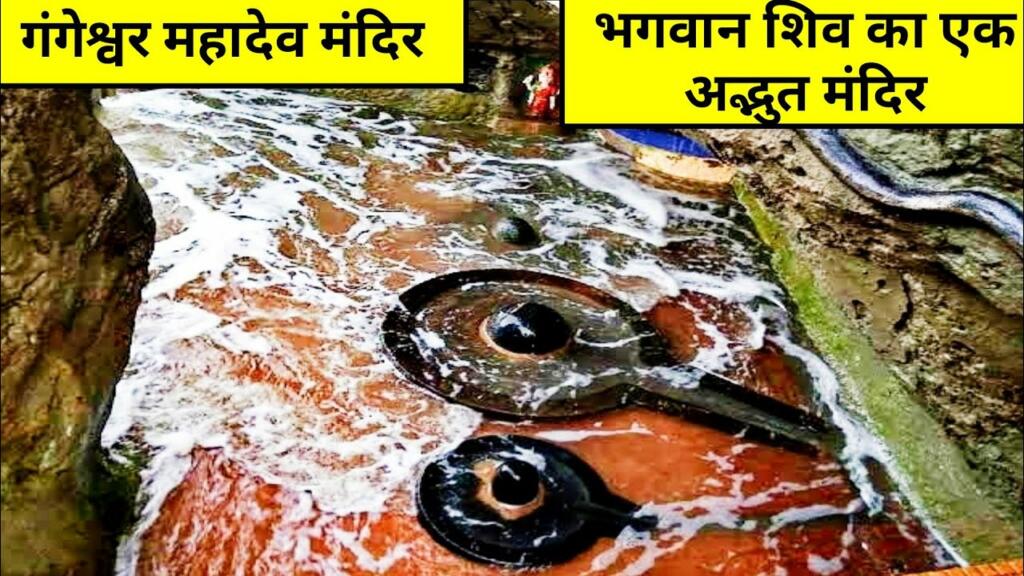Gangeshwar Mahadev Mandir Diu – Guide
Gangeshwar Mahadev Mandir is an ancient Hindu temple located in Fudam village of Diu. Situated on the shores of the Arabian Sea, it is one of the important places of pilgrimage in Diu and a must visit as part of Diu tour packages. Nestled amidst tranquility and natural beauty, the Gangeshwar Temple is dedicated to Lord Shiva, the transformer of the Hindu trinity. The presiding deity here is called Gangeshwar, who is believed to be the Lord of the river Ganges as it descended on earth from Lord Shiva’s locks.
History of this Temple
Gangeshwar Mahadev Mandir Diu is more than 5000 years old. It is basically a cave temple situated between the rocks by the sea. The temple has five Shivalingas of different sizes, which are believed to have been installed by the Pandava brothers during their period of exile. These Shivalingas are continuously washed by the waves of the Arabian Sea and the Lord has to be touched when the waves come back.
The mystical sight of ocean waves saluting Lord Shiva inspires deep feelings of spiritual reverence and devotion among the visitors. Lord Ganesha, Lord Vishnu and Goddess Lakshmi can be seen at the entrance of the Gangeshwar Temple. There was no priest and whatever you offer to the god gets washed away in the ocean within seconds.
Gangeshwar Mahadev Mandir Diu Timings
Gangeshwar Mahadev Mandir Diu opens at 6:00 AM in the morning and close at 9:00 PM in the evening.
| Saturday | 06:00 AM to 09:00 PM, Aarti: 06:30 AM & 08:00 PM |
| Sunday | 06:00 AM to 09:00 PM, Aarti: 06:30 AM & 08:00 PM |
| Monday | 06:00 AM to 09:00 PM, Aarti: 06:30 AM & 08:00 PM |
| Tuesday | 06:00 AM to 09:00 PM, Aarti: 06:30 AM & 08:00 PM |
| Wednesday | 06:00 AM to 09:00 PM, Aarti: 06:30 AM & 08:00 PM |
| Thursday | 06:00 AM to 09:00 PM, Aarti: 06:30 AM & 08:00 PM |
| Friday | 06:00 AM to 09:00 PM, Aarti: 06:30 AM & 08:00 PM |
Places to visit near this Temple
Nagoa Beach
Clear blue water and white sand, along with swaying palm trees, create an exotic Hawaiian atmosphere that cannot be compared to any other place. Along with palm trees, there are also locally grown hoka trees that are exclusive to Diu in India.
Diu Port
One of the best places to visit in Diu and an architectural marvel in itself, the Diu Fort was built by the Portuguese during their colonial rule in India in the 16th century. It is a major tourist destination located at the mouth of the Gulf of Khambhat, one kilometer from the center of Diu city.
Sunset point
If natural and untouched beauty is what you were looking for, then Diu’s Sunset Point is the place for you. The scenic spot, Sunset Point, has a serene atmosphere and is ideal for capturing the sunset with your eyes when the sun disappears behind the Hoka trees.
Naida Caves
There are some creations of nature that are just beyond praise. Naida Caves is easily one of them. It is located near the Diu Fort and has a maze-like structure, which is a delight for all adventure-lovers. Daylight streams into the caves through crevices and crevices that illuminate the inside of the caves and create an ethereal space.
Also Read: Bijasan Mata Mandir Indore, Timings, History, Travel Guide and How to reach
How to reach Gangeshwar Mahadev Mandir Diu
By Air- The nearest airport from Gangeshwar Mahadev Mandir is Diu airport which is at a distance of about 6 km from this temple. From here you can easily reach this temple by using local transport services or taxi.
By Train- The nearest railway station from Gangeshwar Mahadev Mandir Diu is Delvada railway station which is at a distance 12.9 km from this temple. From here you can easily reach this temple by using local transport services or taxi.
By Road- Roads to this temple are well connected with the other cities of the country so you can easily reach this temple by using your own vehicle or by any public buses or taxi from any part of the country.
Subscribe our TFI Dharma YouTube channel to watch Devotional videos because we are here to serve Sanatana Dhrama: TFIDHARMA
